- Home
- Holiday Ideas
-
-
- Choose Your Traveling Theme
-
- Adventure Tourism
-
- Cultural Tourism
-
- Tour Packages
-
-
- Packages by State
-
- Holidays by Interest
-
- Popular Tour Packages
-
- Fair And Festivals
-
- Ayurveda And Yoga
-
- Offers
-
- Destinations
-
Jodhpur The Blue City
Jodhpur
With a sea of sapphire-blue painted houses and guarded by the gorgeous Mehrangarh Fort, the town of Jodhpur, the second-largest in Rajasthan, is an architectural marvel. A labyrinth of medieval lanes, interspersed with vibrant markets, criss-cross the town , which enjoys a languid pace of life.
...To experience the soul of the town , head to its bustling bazaars that provide a fine selection of the spiritual Pichwai paintings, Jodhpuri pants or breeches, exquisite bandini or bandhej (tie and dye) sarees, beautiful badla embroidered lehengas and morchang, a well-liked Rajasthani ethnic music instrument. the town boasts a busy culinary scene and sampling local delicacies just like the savoury pyaz-ki-kachori, the spicy mirchi bada and therefore the thick and sweet makhaniya lassi, is an unforgettable experience.As you explore further, Jodhpur charms you with its rich royal legacy that’s evident in notable landmarks just like the opulent Umaid Bhawan Palace, the majestic Jaswant Thada and therefore the scenic Mandore Gardens, all of which were built by the city’s erstwhile rulers. A 10-km-long wall with eight huge gates divides the old and therefore the new parts of the town , giving tourists a chance to experience the unique features of Jodhpur’s ancient past rubbing shoulders with its cosmopolitan present.For an authentic Rajasthani rural life experience, tourists can explore Khichan Village, which may be a favourite stopover for migratory birds. The evenings here are sheer bliss, when the temperatures of the desert dip and birds glide over the graceful water of the Khichan aviary .Jodhpur was founded by Rao Jodha, the chief of Rathore clan, in 1459. It caters to a good range of tastes and preferences and hence is one among the foremost popular tourist destinations of the country.
Read MoreHow to get there
By Air
Jodhpur Domestic Airport is 5 km away from the city centre. The city being a prime tourist spot is connected by all private and national air carriers.
By Road
Jodhpur is well-connected to major cities of India by road. The highway has good connectivity from Jaipur, Delhi, Jaisalmer, Bikaner and Agra.
Rail
The city is well connected by the railway lines and trains are available from all metro cities.
Attractions In Jodhpur
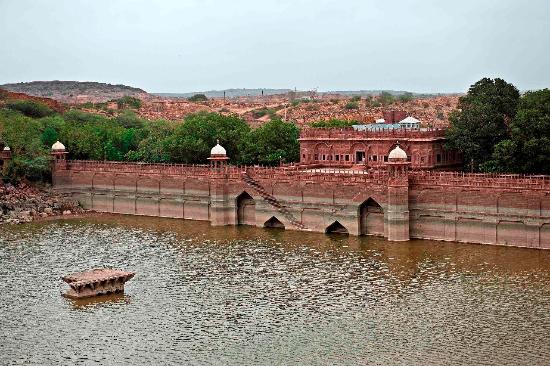
Balsamand
Located on the outskirts of Jodhpur, Balsamand is understood for the serene Balsamand Lake that’s bordered by verdant gardens, where trees like mango, papaya, pomegranate, guava, and plum grow in abundance, lending a sweet and fruity fragrance to the environment. The lake is additionally home to animals and birds like jackal and peacock. This reservoir was built by Balak Rao Parihar in 1159 AD as a reservoir to satisfy the requirements of the people of Mandore.
A small summer palace made from red sandstone stands on the shores of the lake, creating a panorama of Jodhpuri architecture set against the Aravalli Range, with an expanse of water reflecting the edifice altogether its glory. Today, the palace is a heritage five-star hotel, hosting a mix of foreign and native tourists.
Bishnoi Village Safari
Far from royal palaces and vibrant markets of the most city, the village of Bishnoi offers glimpses of the agricultural lifetime of Rajasthan in an expanse of dry desert and swaying trees. One can explore the scenic beauty and mingle with the tribes of this area by booking a jeep safari. The safari tour was founded by Jodhpurs rajas and maharajas to supply a peek into the culture of this Marwa state to Indian and foreign guests.
Bishnoi tribes of the village are staunch worshippers of nature altogether its forms, especially the sanctity of plant and animal life. They even pray to the green trees and animals that inhabit their land, and are strict vegetarians. aside from giving an insight into the lives of the tribal communities, the safari includes an expedition to Guda Bishnoi Lake, where one can find various species of exotic migratory birds and species of animals, like blackbucks and chinkaras, for whom the lake is that the primary pond .
During the safari, you'll also interact with families of weavers, potters and shepherds who are within the trade for generations. they will offer you an insight into the history and social-cultural landscape of Rajasthan.

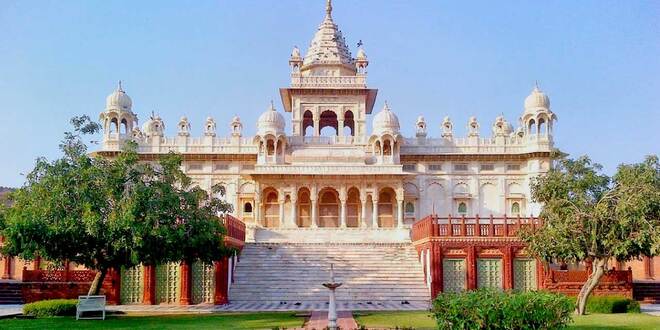
Jaswant Thada
Jaswant Thada may be a 19th century royal cenotaph located to the left of the Mehrangarh Fort complex. it had been built by Maharaja Sardar Singh to commemorate his father Maharaja Jaswant Singh II, the 33rd Rathore ruler of Jodhpur. A paragon of architectural excellence, it’s a white marble memorial built out of intricately carved sheets of marble; actually , the faade seems to shine when hit by sunlight.
Today, Jaswant Thada is a museum and gallery of sorts, displaying memorabilia, including paintings and portraits of the rulers of Jodhpur, to the general public . The grounds of the thada function a venue for morning concerts during music festivals like the Rajasthan International Folk Festival and therefore the World Sacred Spirit Festival, prompting thousands of tourists to flock to the town in search of recreation and musical enlightenment.
Mandore Gardens
Mandore Gardens are a gorgeous tourist spot located a stones throw from the most city. The lush, verdant gardens are well-planned, with leafy trees that foster a pleasing and peaceful environment. you’ll spend a leisurely afternoon within the shade of those trees, while brushing abreast of the history of Mandore, which is steeped in royal occupation. Tourists can admire the dewals or cenotaphs, dating back to the 17th and 18th centuries, of Jodhpur’s former rulers that are set within the landscaped lawns.
The most striking dewal far and away is that of Maharaja Ajit Singh, the ruler of Marwar (1861-1901). The cenotaphs of the Maharani are assail a rocky outcrop over Capitol Hill . The dewals are made up of red sandstone, with intricately carved pillars, wide corridors, tall spires and sculptures.
Near the cenotaphs is that the hall of heroes that's dedicated to varied deities and Rajput folk heroes. The statues of the deities and heroes are carved out of rock and painted in bright colours. While here, dont forget to explore the temple, referred to as the temple of 33 crore gods, with images of Hindu gods adorning the complex. you'll also inspect the govt Museum, which houses relics and artefacts significant to the world .
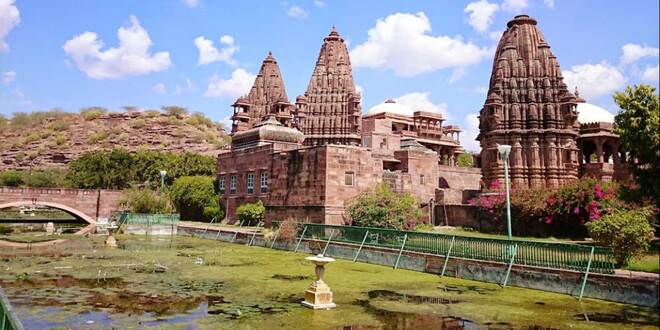

Mehrangarh Fort
A renowned landmark of Jodhpur, Mehrangarh Fort is one among the most important forts within the city. a perfect viewpoint for the bird’s eye view of Jodhpur, one can trek to the highest to ascertain the town spread sort of a blue ocean at the foot of a hill. The fort may be a work of art known for its exquisite latticed windows, carved panels, intricately decorated windows and walls of the Moti Mahal, Phool Mahal and Sheesh Mahal that sit pretty within the vast, sprawling complex of the fort.
Head next to the Elephant Howdah gallery on the southern side of Shringar Chowk, which displays the elephant seats employed by the royals of Jodhpur. the foremost striking of those is that the silver howdah presented to Maharaja Jaswant Singh I (1629-1678), the ruler of Marwar, by Mughal emperor Shah Jahan , as a logo of honour.
You can then proceed to the palanquin gallery, displaying the first means of transport of royal ladies; the Daulat Khana, literally translating to wealth store, where the royal treasury was kept; the painting gallery, showcasing a marvellous collection of miniature paintings of the Marwar School; cloth gallery, where the plush carpets, rich brocades and heavy velvets of the royals of Jodhpur are preserved; the Sileh Khana, which was the royal armoury; and galleries where exquisite wooden crafts, cradles and turbans of the princely families are often viewed.
There are seven gates that require to be crossed so as to succeed in the fort. The gates still bear the marks of the battles fought within the past. one among the seven gates has been named Jaya Pol, meaning victory. it had been built by Maharaja Man Singh, the ruler of Jaipur, to commemorate his victories over Jaipur and Bikaner armies. Fateh Pol was built by Maharaja Ajit Singh (1861-1901), the ruler of Marwar, to celebrate the defeat of the Mughals.
The work done on the fort is so impressive, famous author, Kipling of The Jungle Book fame, once mentioned it because the work of giants!
Khichan Village
Located to the north west of Jodhpur in Phalodi district, about 3 km away, the village of Khichan may be a paradise for nature lovers and bird watchers. Popularly referred to as the village of migrating birds, it’s a cluster of ponds (talao) that typically hosts an outsized sort of unique birds just like the demoiselle crane that flocks from North China and Mongolia. Numbering quite 20,000, the cranes fly to Khichan in August and stay till March.
During this point , the residents of the village take special care of their avian guests, keeping them well-supplied with grains. Special enclosures, referred to as chugga ghars, are built to feed the birds. Therefore, this is often the simplest period during which to go to Khichan.
The evenings at this village are sheer bliss, when the temperatures tip and therefore the birds glide over the graceful surface of the ponds, the sun casting a warm glow over the town because it approaches the horizon. Undulating land roofed with blue skies makes it an ideal spot for weekend getaways.
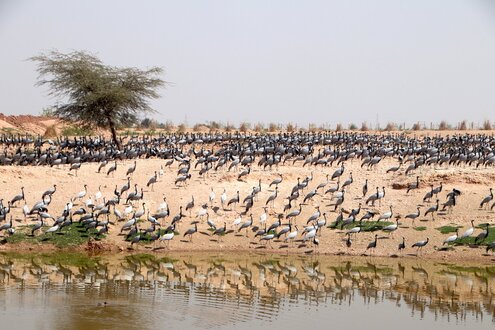
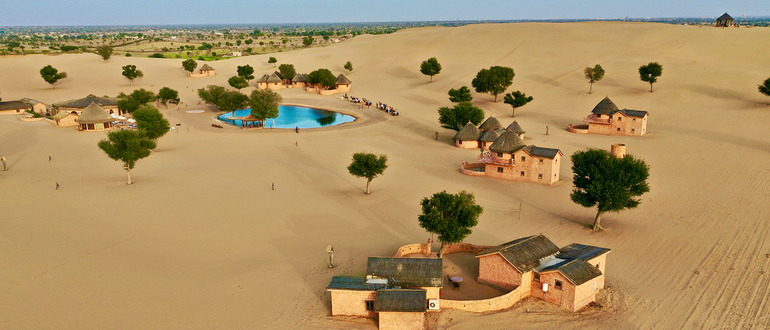
Khimsar
The village of Khimsar is nestled amidst the sand dunes of the Thar Desert. One can take a jeep safari from here to the blackbuck reserve or ride a camel through the country desert countryside. the foremost popular attraction is Khimsar Fort that was inbuilt the 18th century. Tourists can enjoy an exploratory rehearse the forts wide corridors, past scarred walks that allude to Khimsars colourful past. The fort once housed small kingdom within its premises, established by the ruler of the house of Jodhpur.
The forts construction is claimed to possess begun in 1523, but the royalty only started living here once the women quarters were inbuilt the 18th century. at the present , Khimsar Fort is that the official home of the 18th, 19th and 20th generations of the Khimsar Thakurs.
The best time to go to is during the onset and waning of winter season, when the temperatures are ideal. Lying midway between Jodhpur (98 km) and Bikaner (154 km), Khimsar is definitely approachable from both cities.
Nagaur
Lying about 140 km from Jodhpur, Nagaur is steeped in history. Tourists can visit the varied forts, temples and monuments that are a delight for history lovers. the most attraction is Nagaur fort, known for its spacious campus, palaces and temples. it’s said to possess been built by the rulers of the Nag dynasty within the 2nd century, but was rebuilt within the 12th century. A stellar example of the confluence of Rajput and Mughal architectural styles, the fort has borne witness to variety of battles over the centuries. Now, it’s replete with dancing fountains and plush gardens, so you’ll take a leisurely stroll while admiring the splendour of the fort. Nagaur Fort also hosts a well-liked Sufi music festival.
Tourists also can visit the nearby Khinvsar Fort, Kuchhaman Fort, Makrana, Meera Bai Temple, Bhanwal Mata Temple etc. Other important stopovers include Jain temple in glass, Tarkeen Dargahand Saiji ka tanka, Cenotaph of Amar Singh Rathore, Bansiwala Temple, Nath Ji ki Chhatri, and Barli. Sambhar Lake, one among Indias largest salt lakes, sits on the southwestern corner of the district, and is additionally worth a visit.
Located to the northwest of the Marwar region of Rajasthan, the historical town of Nagaur carries traces of varied dynasties that ruled here over the centuries. it had been ruled by the Rajputs and therefore the Chauhans. With the arrival of Mughal era, the Rajputs and Chauhans were never ready to conquer it. The town also finds mention within the Mahabharata.
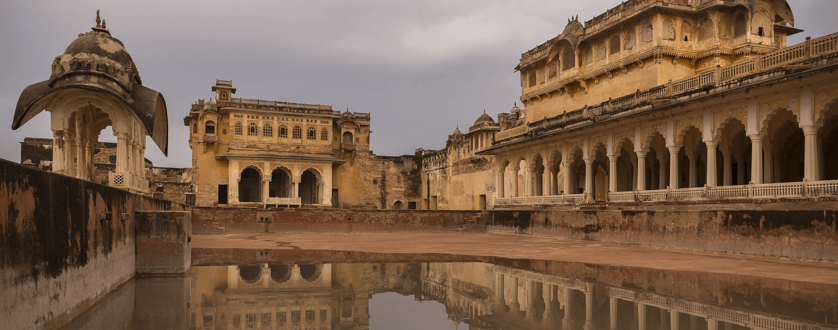
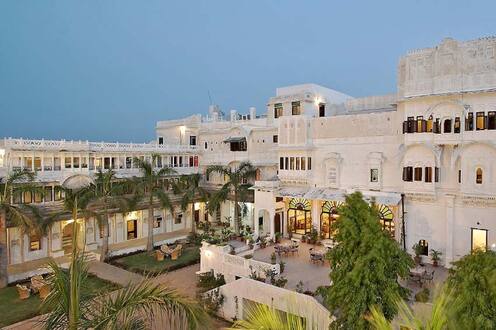
Nimaj
Located 109 km faraway from the most city, Nimaj is home to the temple of Nimaj, also as Nimaj Palace. Nimaj Temple is devoted to Goddess Durga and was inbuilt the 9th century. it’s a singular gallery that showcases a number of the masterpieces of the sculptural art of Rajasthan.
Nimaj Palace, now a heritage hotel, has 40 elegant and well-equipped rooms, and excellent dining facilities. you’ll book jungle safaris, tribal safaris and folk performance tickets at the hotel.
The palace offers a chance for you to step into the lives of the royals of Rajasthan, and knowledge their lavish lifestyle. The palace was originally built as a residential palace of the royalty of Nimaj. The Rathore community of the Rajputs, credited with founding Jodhpur, own the palace. The Thakurs of Nimaj were one among the eight Sirayats (the highest honour given to lords for his or her bravery) of the Marwar region.
Phalodi
Lying about 141 km from the town of Jodhpur, Phalodi is an old caravan centre within the Thar Desert. it’s scattered with noted forts and palaces that bring interesting historical tours. the most attraction is Phalodi Fort, renowned for its marvellous architecture. it had been constructed in 1488 by Rao Hammir Ranawat, who was the grandson of the king of Marwar, Rao Suja. Another attraction is Lal Niwas, named so for the red sandstone utilized in its construction. This residential palace was created within the year 1750,
but sort of a number of old palaces in Rajasthan, now is a heritage hotel. Glass work and grand chandeliers lend a chic look to Lal Niwas. aside from this, Phalodi also boasts of an outsized number of havelis that are painted in vibrant hues.
In history, this place finds mention due to its Jain and Hindu temples. The Ramdevra Temple is one such masterpiece, housing an idol whose origin has been traced as far back because the 8th century.
Tourists can buy classical jutis that are embellished with heavy embroidery, and are quite popular in Phalodi.
This town is believed to possess been founded within the 15th century, and is more famously referred to as salt city, sharing its borders with such major towns of Rajasthan as Bikaner, Nagaur, Jaisalmer and Jodhpur. Even today, it thrives on the trade of salt.
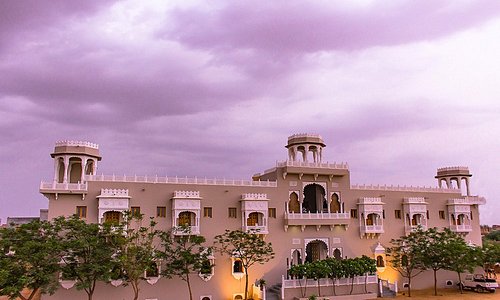
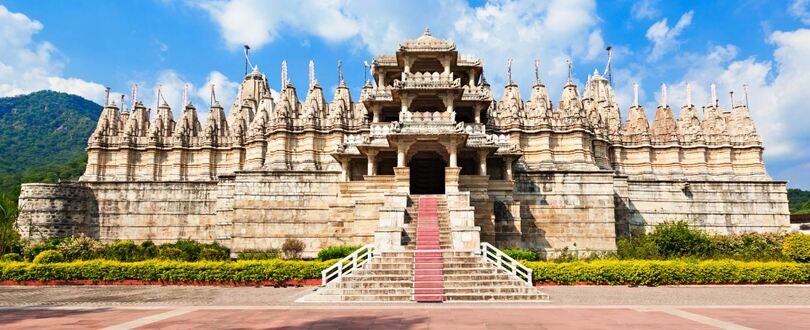
Ranakpur
Ranakpur Temple, one among the foremost beautiful spiritual sites in India, makes for a perfect excursion if one is travelling between Udaipur and Jodhpur. it’s located in Ranakpur village and is surrounded by Aravalli Hills. the most temple of Ranakpur, Chaumukha Mandir (four-faced temple), is devoted to Adinath, the primary Jain tirthankar (saint), and is therefore a crucial shrine for the Jain community in India.
Made entirely out of white marble, the temple comprises 29 halls, 80 domes, 400 columns and 1,444 individually engraved pillars. The pillars themselves are a thing of utmost beauty, adorned with peach and beige hues. They display intricate carvings of elephants, flowers, and other people . Interestingly, no two pillars are the same!
Ranakpur Temple features high, domed ceilings and wide corridors. The ceilings are ornamented with intricate carvings of nymphs and celestial maidens playing musical instruments. There are five spires, and you'll find a 6-ft-high statue of Adinath under the most important spire at the doorway .
The interior has been designed during a way that permits for a cool breeze to blow through the hallways and courtyards constantly. the simplest time to go to the temple is between October and February, when the weather remains pleasant.
Ranakpur Temple is surrounded by two other Jain temples, dedicated to Neminath (the 22nd tirthankar) and Parshvanath (the 23rd tirthankar), both within the complex. All three temples are carved out marvellously and supply a way of tranquility to the visitors. One shouldn't fail to go to the nearby Sun Temple and Amba Mata Temple while in Ranakpur, which are even as lovely.
Sardar Samand Lake Palace
Located on the banks of the pristine Sardar Samand Lake, Sardar Samand Lake Palace was constructed by Maharaja Umaid Singh in 1933 as a lodge . Even after decades, it remains the well-liked abode of royal families and travellers because it has now been converted into a hotel. The resort itself is sort of a lesson in Rajasthans history, featuring an exquisite collection of original watercolour paintings and African trophies.
The palace has its own Oriental Garden, boat-house, swimming bath , and tennis and squash courts. Thus, you'll relax and rejuvenate, without a care within the world, as all of your needs are attended to.
Go for a leisurely rehearse the palaces large manicured lawns, and catch a spectacular sunset by the lake, which is one among the simplest spots within the state for bird watchers, who are going to be treated to the sight of such migratory and native birds because the yellow-legged green pigeon, Himalayan griffon, and Dalmatian pelican.
Intermingle with modern royals, savour the delicious flavours of Jodhpur, and have interaction with the locals at Sardar Samand Lake Palace, while staying in utmost comfort and luxury.
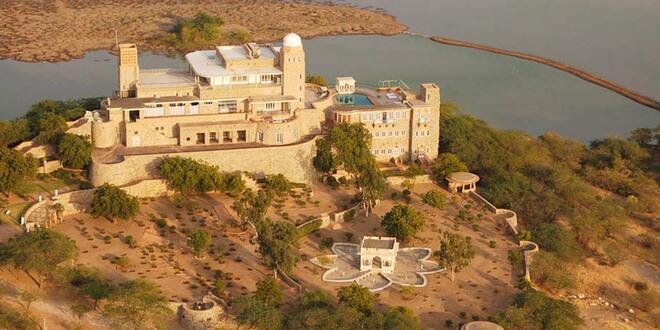
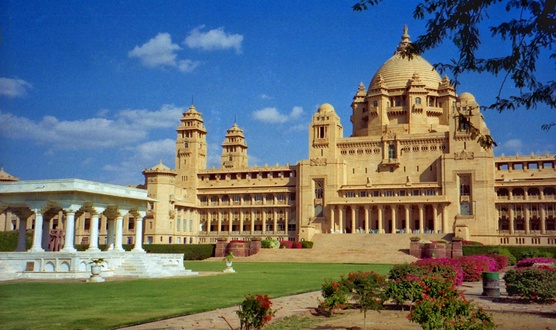
Umaid Bhawan Palace
Built by and named after Maharaja Umaid Singh, the ruler of Jodhpur (1918-1947), Umaid Bhawan Palace is taken into account together of the foremost opulent and largest homes ever built. Showcasing a stunning blend of eastern and western architectural influences, it boasts large viewing balconies, tall ceilings and durable stone pillars.
The palace sits on Chittar Hill, the very best point in Jodhpur, and provides a desirable view of the blue city. From here, one can capture stunning pictures.
The palace is surrounded by splendid gardens and houses over 300 and fifty rooms. it had been converted into a heritage hotel in 1977, and is now segmented into a museum, the Royal residence, and a Heritage Hotel.
The Taj Hotel Group owns and maintains one wing of the palace. it's suites that are categorised because the Maharani Suite, Maharaja Suite, Royal Suite, Regal Suite and Deluxe rooms, allowing guests to urge the essence of royal life, as long as Maharani Badan Kanwar of Jodhpur actually lived here for a few time. The hotel ingratiates itself to guests with elegant dining, a spa and a yoga studio. The grand property also houses a museum that's hospitable all. The museum has exhibits of glass, porcelain wares, memorabilia, and knowledge on the building of the palace.
While youre here, dont forget to catch the sunset at the Balsamand and Kalyana lakes, located in close vicinity to Umaid Bhawan Palace.
Shopping
Jodhpur may be a bustling trading centre of handicrafts and a shoppers paradise. Its vibrant bazaars are lined with big and tiny shops where you’ll buy exquisite Rajasthani textiles, clay figurines, miniature camels and elephants, marble inlay work and classic silver jewellery.
Stroll through the colorful markets as you bargain good-naturedly with the shopkeepers for his or her numerous wares; explore the narrow gullies that hold a number of the simplest spoils in Jodhpur;
devour lovely dupattas with exquisite mirror work, jutis with intricate embroidery and embellished with bells and tassels. Head to Ghanta Ghar, also referred to as tower market, and ranked no 1 by the residents for its big selection of spices, pretty handicrafts, fabrics with intricate embroidery done by hand, flavoured teas and rare antiques. Next, make your thanks to Nai Sarak for Jodhpurs famous tie-and-dye fabrics, sarees, bandhej suit pieces, turbans and dupattas. For souvenirs, Sojati Gate Market may be a good bet, offering jewellery and handicrafts. you'll also get beautiful designs of mehendi (henna) applied on your hand.
Mochi Bazaar is that the best place for jutis, available during a host of colors and styles , while Umaid Bhawan Palace market is understood for antique furniture, copper ware and paintings. If you would like to upgrade your wedding season wardrobe, make a beeline to Kapraa Bazaar to select up leheriya, the normal Rajasthani attire.
Jodhpur is additionally very famous for its silver work, and Sarafa Bazaar may be a one-stop buy all things silver. devour an important silver bracelet or a fragile anklet set with semi-precious stones youll be spoilt for choice. Finally, if youre looking to form your parties fancier, head to Tripolia Bazaar for colourful, rich crockery in an array of styles and motifs.
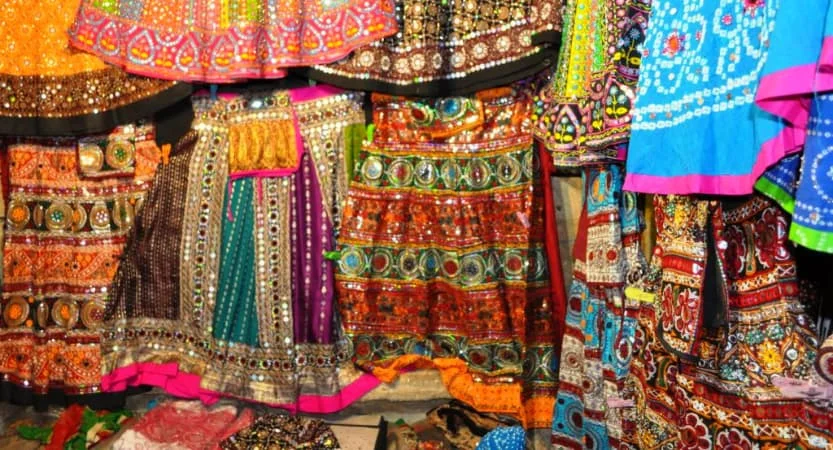
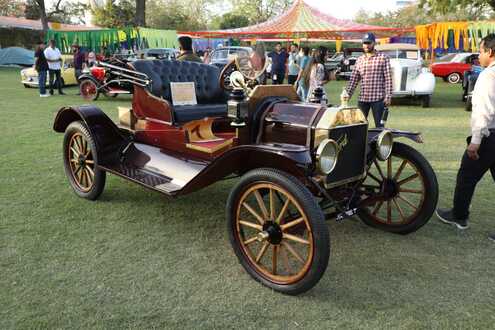
Vintage Car Display
The vintage car display at Umaid Bhawan Palace emulates the grandeur of the royal history of Rajasthan. the gathering of those vintage cars belongs to the House of Mewar and has been curated to supply a tremendous experience to vintage car lovers from India and round the world. There are 22 splendid vehicles on display, including a seven-seat 1938 Cadillac complete with purdah (veil) system, the magnificent 1934 Rolls-Royce Phantom and therefore the Cadillac convertible.
The vintage car rally starts from Umaid Bhawan and ends at Polo Ground, featuring such beauties as 1934 make Buick Super, Morris Minor and Delahay, among others. variety of cars within the rally are owned by Gaj Singh II, an Indian politician, who believes it's important to teach the general public about the history of automobiles through these vintage masterpieces.
WANT TO RENT A CAR IN INDIA ?
Choose Your Traveling Theme
















